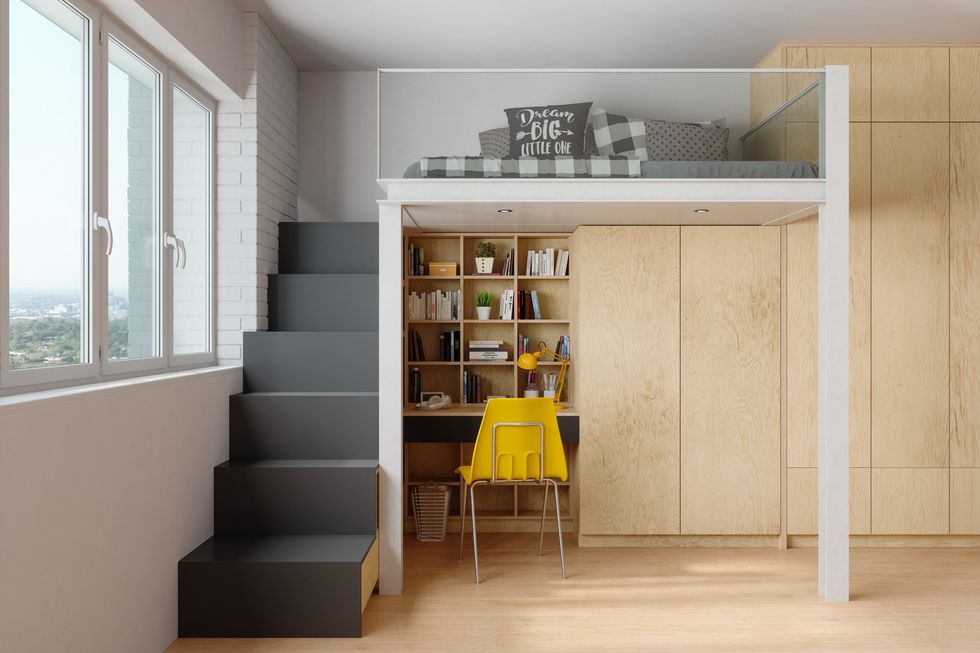Five interior design tips to maximise even the smallest of spaces
Interiors expert Kate Conrad shares how homeowners can make the most of their property,
regardless of size and layout
Don't Miss
Most Read
Some people are lucky enough to own huge houses with more rooms and space than they know what to do with.
However, most of us live in modest homes that get a little crowded as we accumulate endless bits and bobs over the years.
But whether you reside in a mansion or a maisonette, we can all agree that we want to make the most of our space.
**ARE YOU READING THIS ON OUR APP? DOWNLOAD NOW FOR THE BEST GB NEWS EXPERIENCE**
For most of us, that means having comfortable yet well-organised environments that both look and feel good.
And as our needs evolve, we might need to optimise space, whether to fit in new furniture, enhance functionality, or give our home a refresh to boost home value.
It's all about making the right changes to enhance the space you have available while keeping your environment looking fresh and stylish.
Here are five key points to consider to get this right.

Mirrors are great in narrow spaces like hallways
|GETTY
Built-in storage
Built-in storage is a no-brainer, especially if you own a lot of things. Reducing visual clutter is one of the best ways to make your rooms look bigger and more elegant.
For example, an ottoman in the living room can help you keep miscellaneous items like spare throws, pillows, and slippers out of sight.
A handy mudroom bench in the hallway can keep spare shoes or seasonal items hidden, and beds with built-in drawers are incredibly helpful for keeping extra clothes or linen close by but concealed.

'Opt for lofted or bunk beds, which allow you to use the space underneath for a desk or workspace'
|GETTY
Use light colours and reflections
We all know how vital first impressions are. In smaller rooms, keeping walls and ceiling in white or soft neutrals and keeping furnishings in pale tones can really give that airy, open, and bright feel.
Something many don't know is that mirrors can also be key in making rooms feel bigger.
Big statement mirrors or even mirrored side tables and picture frames can help distribute light throughout the room, while tall mirrors placed in the right spot can visually extend boundaries, making rooms look longer or taller.
Mirrors are great in narrow spaces like hallways, for instance.
LATEST DEVELOPMENTS:
Modular and multifunctional furniture
Generally, multifunctional, modular furniture is a must, as it maximises the use of space and creates flexibility.
For example, a big couch can really make a room feel 10 times smaller, even if it's a relatively large one.
On the other hand, a modular (or sectional) sofa allows you to play around with individual pieces and change your set-up as many times as you want.
Separate the individual pieces to make conversation easier when your friends come over, or put each piece together in a long line for a movie night.
For multifunctional furniture, I'd highly recommend extendable or fold-down tables, as well as stackable storage units which can be expanded as and when you need them, and be reconfigured for different rooms, too.
Embrace hidden corners
Have you ever looked at the empty space under your stairs and thought, 'What can I do with this?'
The answer is: a lot. Assess all awkward corners and alcoves in your home, as they can be unexpected space-savers.
These areas really lend themselves to elegant built-in shelving to display collectables or valuables, or pull-out drawers to hide away clutter.
But you can really get creative with things like a mini-library, secret wine storage or pantries, or even a tiny bar.
If you have enough light, your alcove could even be a great spot for a reading nook with a built-in bench and extra storage underneath.
I've also seen some great pet hideaways or hidden litter box stations to give your furry friends their own private spot, too.
Don't eat your floor space
If you need more furniture, my best tip would be to go for tall and slim pieces instead of wide ones. This means you get the storage benefits of that extra piece without having to sacrifice too much floor space.
Narrow hallway? Go for a tall yet narrow sideboard. Need more storage in your bedroom or living room? Consider a tall corner unit. And for single bedrooms, opt for lofted or bunk beds, which allow you to use the space underneath for a desk or workspace.
Floating shelves, floor-to-ceiling bookcases, over-the-door hang racks and organisers, wall-mounted desks, and fold-down tables are all great solutions.
Senior interior and homes expert Kate Conrad is the founder of Madison and Mayfair. For more information, visit https://madisonandmayfair.com/.










